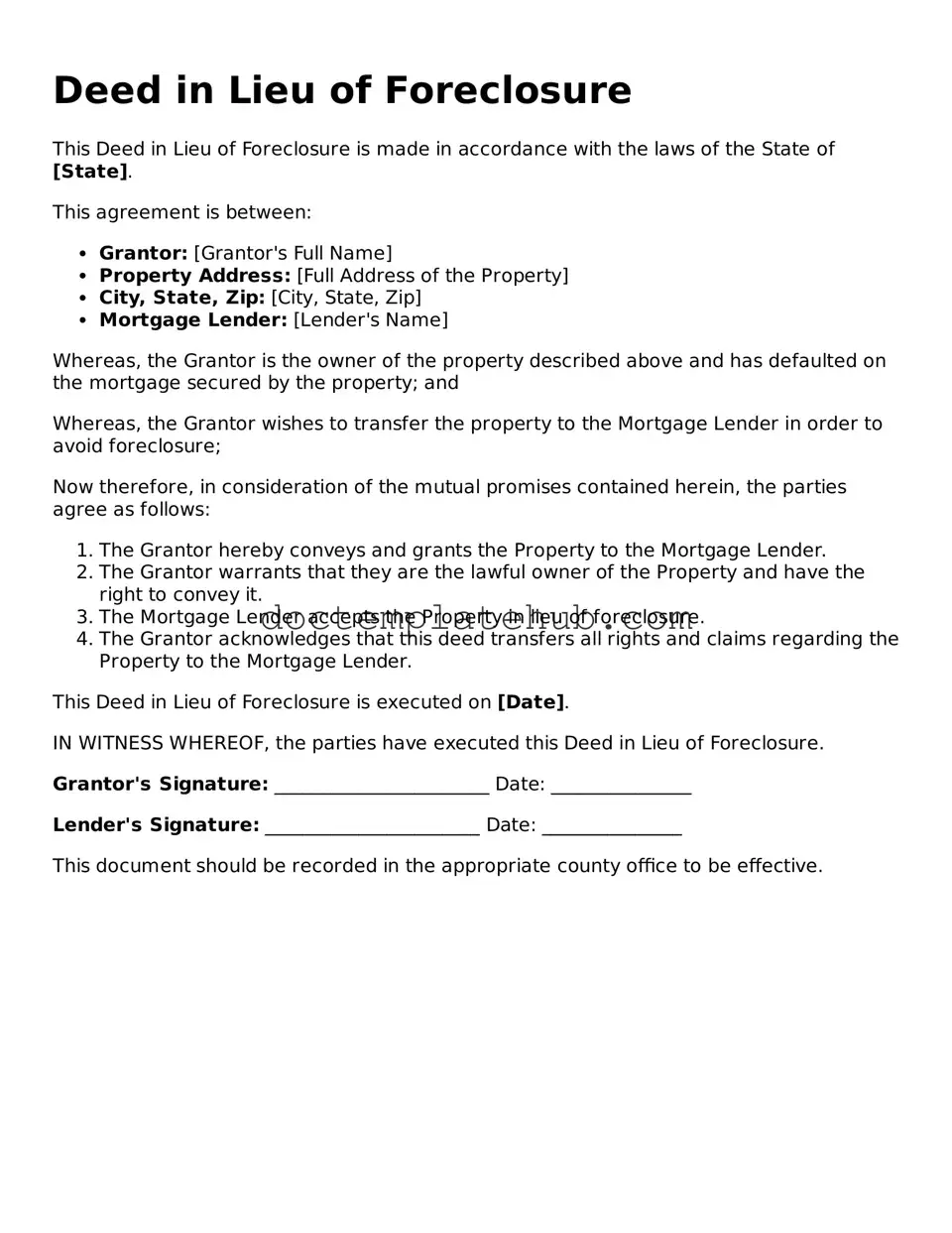What is a Deed in Lieu of Foreclosure?
A Deed in Lieu of Foreclosure is a legal process in which a homeowner voluntarily transfers ownership of their property to the lender to avoid foreclosure. This option allows the homeowner to relinquish their mortgage obligations while the lender takes possession of the property. It can be a beneficial alternative for those facing financial difficulties, as it may help preserve the homeowner's credit score compared to a foreclosure. Additionally, it can expedite the resolution of the mortgage default situation.
How does the process work?
The process begins with the homeowner contacting their lender to express interest in a Deed in Lieu of Foreclosure. The lender will typically require the homeowner to provide financial information to assess their eligibility. If both parties agree to the terms, the homeowner will sign the Deed, transferring ownership of the property to the lender. It is essential to ensure that the property is free of any liens or other encumbrances, as these may complicate the transfer. After the Deed is executed, the lender will typically release the homeowner from the mortgage obligation.
What are the benefits of a Deed in Lieu of Foreclosure?
There are several advantages to pursuing a Deed in Lieu of Foreclosure. First, it can provide a quicker resolution to the homeowner's financial difficulties. This option may also allow the homeowner to avoid the lengthy and often stressful foreclosure process. Additionally, a Deed in Lieu may have a less severe impact on the homeowner's credit score compared to a foreclosure. Lastly, some lenders may offer relocation assistance or other incentives to homeowners who choose this option, making the transition smoother.
Are there any drawbacks to consider?
While a Deed in Lieu of Foreclosure has its benefits, there are potential drawbacks to consider. Homeowners may face tax implications, as the IRS may treat the forgiven mortgage debt as taxable income. Furthermore, not all lenders accept Deeds in Lieu, and some may require homeowners to explore other options first. Homeowners should also be aware that a Deed in Lieu does not guarantee a release from all liabilities associated with the property, particularly if there are second mortgages or other liens in place.
Can a homeowner still pursue a Deed in Lieu if they have already started the foreclosure process?
In many cases, homeowners who have already begun the foreclosure process can still pursue a Deed in Lieu of Foreclosure. However, this will depend on the lender's policies and the specific circumstances of the case. It is advisable for homeowners to contact their lender as soon as possible to discuss their options. Engaging with the lender early in the process can help facilitate a smoother transition and potentially halt the foreclosure proceedings.
What should a homeowner do before signing a Deed in Lieu of Foreclosure?
Before signing a Deed in Lieu of Foreclosure, homeowners should take several important steps. First, they should seek legal advice to fully understand the implications of the transfer. Consulting a financial advisor can also provide insight into potential tax consequences. Homeowners should ensure that they have explored all available alternatives, such as loan modifications or short sales, before committing to this option. Finally, reviewing the terms of the Deed carefully is crucial to ensure that all conditions are understood and acceptable.
